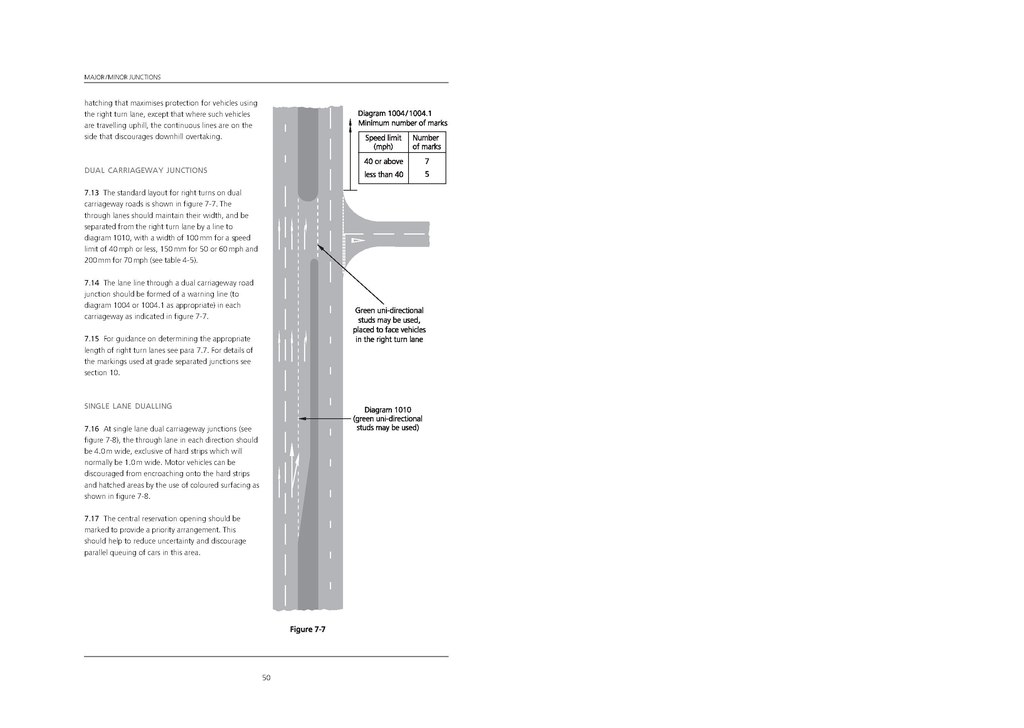hatching that maximises protection for vehicles using the right turn lane, except that where such vehicles are travelling uphill, the continuous lines are on the side that discourages downhill overtaking.
DUAL CARRIAGEWAY JUNCTIONS
7.13 The standard layout for right turns on dual carriageway roads is shown in figure 7-7. The through lanes should maintain their width, and be separated from the right turn lane by a line to diagram 1010, with a width of 100 mm for a speed limit of 40 mph or less, 150 mm for 50 or 60 mph and 200 mm for 70 mph (see table 4-5).
7.14 The lane line through a dual carriageway road junction should be formed of a warning line (to diagram 1004 or 1004.1 as appropriate) in each carriageway as indicated in figure 7-7.
SINGLE LANE DUALLING
7.15 For guidance on determining the appropriate length of right turn lanes see para 7.7. For details of the markings used at grade separated junctions see section 10.
7.16 At single lane dual carriageway junctions (see figure 7-8), the through lane in each direction should be 4.0 m wide, exclusive of hard strips which will normally be 1.0 m wide. Motor vehicles can be discouraged from encroaching onto the hard strips and hatched areas by the use of coloured surfacing as shown in figure 7-8.
7.17 The central reservation opening should be marked to provide a priority arrangement. This should help to reduce uncertainty and discourage parallel queuing of cars in this area.

50
